With over two thousand years of history, it’s no wonder that Barcelona has more than its fair share of myths, legends and superstitions.
From the squares and alleyways of the Gothic Quarter to the peak of Mount Tibidabo, in this post, we uncover the best-known stories.
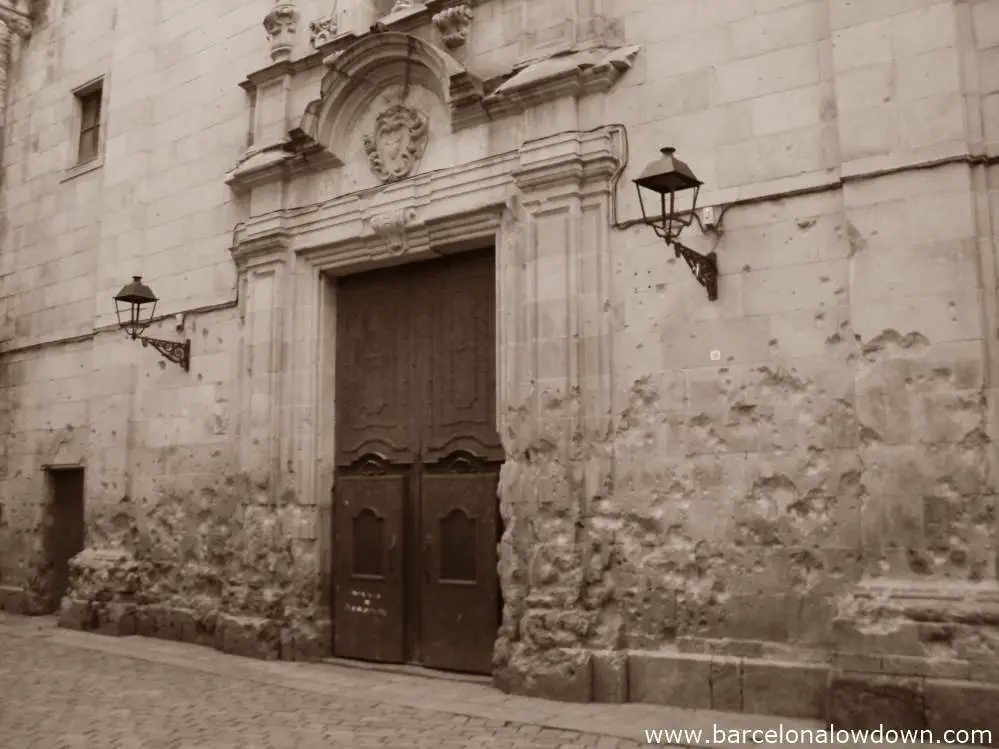
The Vampire of Barcelona
At the beginning of the twentieth century, the people of Barcelona lived in fear of a vampire that terrorised the narrow streets of the Raval neighbourhood.
Unlike Transylvanian vampires, who sleep during the day, Barcelona’s vampires roamed the streets looking for children to abduct before draining their blood to make potions.
Enriqueta Martí was born in Sant Feliu de Llobregat in 1868. As a young woman, she moved to Barcelona, where she worked as a nanny before becoming a prostitute and witch doctor. She is also said to have run a brothel that specialised in providing child prostitutes to wealthy customers.
It isn’t clear how much of the vampire’s legend is true and how much was made up by the newspapers of the time. When she was finally arrested in 1912, police found the remains of several victims in her home.
Despite the brutal nature of her alleged crimes, Enriqueta Martí never faced trial, presumably thanks to the influence of wealthy clients who feared they would be incriminated.
After her arrest, she spent fifteen months in the Reina Amalia prison before being beaten to death by other inmates.
The Curse of Santa Maria del Pi
The Basilica of Santa Maria del Pi was inaugurated in 1453 and took approximately 150 years to build.
Legend has it that construction took so long because the church was cursed. Each time the bell tower neared completion, it collapsed and had to be rebuilt.
Finally, the master mason in charge of building the church made a pact with the devil and promised to let him have his soul on the completion of the tower’s hundredth step.
When the tower reached the height of the ninety-ninth step, the crafty builder started working on other parts of the church. He planned to build the church so slowly that he would die of old age without ever completing the tower.
The devil was so enraged that when the builder’s successor completed the tower, he stamped his hoof on the hundredth step, leaving a footmark as a warning to anyone who dared to climb the tower.
Apparently, the devil’s plan backfired, and so many people climbed the tower to see the hoof print that, in the end, the vicar had the mark removed.
The Alchemist’s House
During the Middle Ages, Barcelona’s Jewish community lived in an area of the city called El Call. Legend has it that the building at number 8 Carrer de l’Arc de Sant Ramon del Call belonged to an alchemist who lived there with his daughter.
The alchemist’s daughter fell in love with a young Christian. Knowing that her father would disapprove, she kept the relationship secret.
As time went by, she grew tired of lying and urged her lover to ask her father for her hand in marriage. When the young man refused, the alchemist’s daughter broke off the relationship.
The spurned youth’s love quickly turned to anger, and he visited the alchemist to get a poison that would kill his ex-lover. The alchemist prepared a rose impregnated with venom capable of killing someone with a single sniff.
The following day the horrified alchemist found his daughter dead, a rose clasped loosely in her hand. Realising what had happened, he put a curse on the house, which has stood empty ever since.
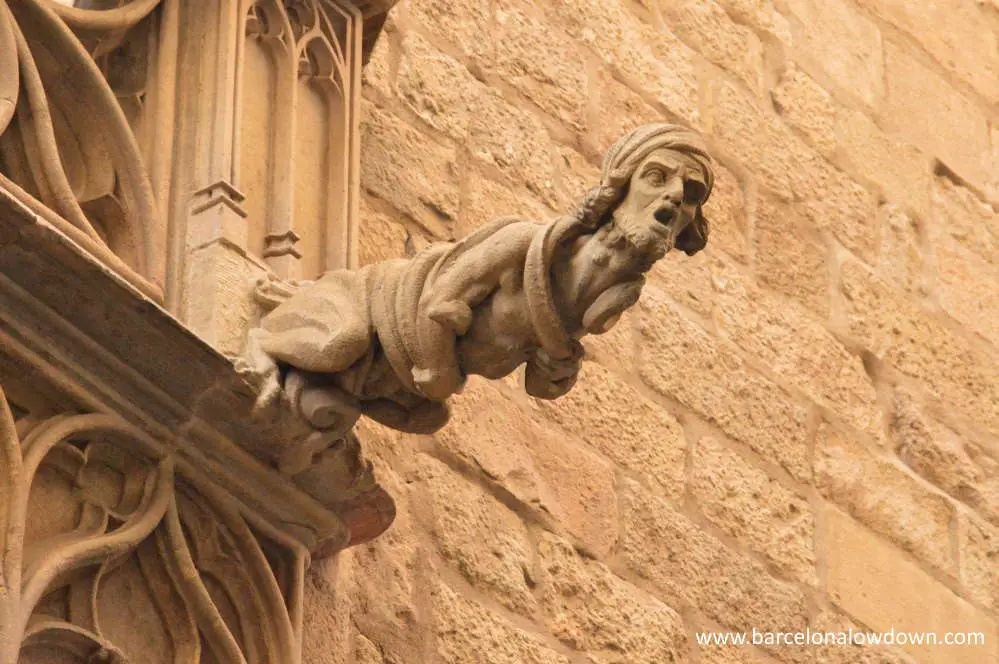
The Skull Underneath El Pont Del Bisbe
The covered stone bridge which spans Carrer del Bisbe is one of the most photographed sights in Barcelona’s Gothic Quarter.
The bridge is much newer than the adjoining buildings and was built in 1929 by Rubió I Bellver, who planned to beautify the area surrounding Barcelona Cathedral by tearing down all non-Gothic buildings.
Even though it is less than a century old, the elaborate Gothic-style bridge is associated with several legends and superstitions, all of which are connected to the gruesome skull and dagger motif on its underside.
Some say that the skull was the architect’s way of expressing his displeasure after his plan was rejected. Others have even suggested that, rather than being a stone carving, it is, in fact, a real human skull!
Another legend says that if the dagger that traverses the skull is ever removed, Barcelona will be destroyed.
On a more positive note. Another legend states that if you make a wish while walking backwards under the bridge and looking directly at the skull, then your wish will come true.
The Ghost of the Canaletas Fountain
The Canaletas Fountain is best known as the place where Barça fans celebrate the team’s victories. There’s been a fountain here since the sixteenth century, and the current one was inaugurated in 1860.
The best-known legend about the Canaletas fountain says that anyone who drinks its water will fall in love with Barcelona and will always return no matter how far they travel.
The other, more sinister legend says that during the nineteenth century, a ghost dressed in a black cape used to walk up and down this stretch of the Ramblas.
One day the ghost stopped at the fountain to speak to a group of young women who were collecting water. The women were so frightened by the spirit that they refused to leave their homes for several days.
Eventually, a group of neighbours banded together to guard the fountain, but the ghost never returned and hasn’t been seen since.
The Bride of Santa Maria del Mar
The following legend recounts the tale of a young woman who died on her wedding day.
The bride’s funeral took place in the Basilica of Santa Maria del Mar and her family decided to bury her dressed in her wedding dress and best jewellery. When the ceremony was over, family and friends returned to their homes, leaving the coffin in the empty church overnight.
Later that night, two thieves broke into the church to steal the young bride’s jewels. Their plans were thwarted when they hurriedly ripped the earrings from her ears, tearing the lobes right off. The dead bride let out a scream, causing the thieves to panic and flee the crime scene. Revived by the pain, she returned home where, believing she was a ghost, her terrified family refused to let her in.
Fortunately, the girl’s fiancée realised that she was alive and called a doctor who concluded that she had suffered a case of cataplexy. Despite the doctor’s diagnosis, superstitious neighbours were convinced that the dead bride had been resurrected during the night.
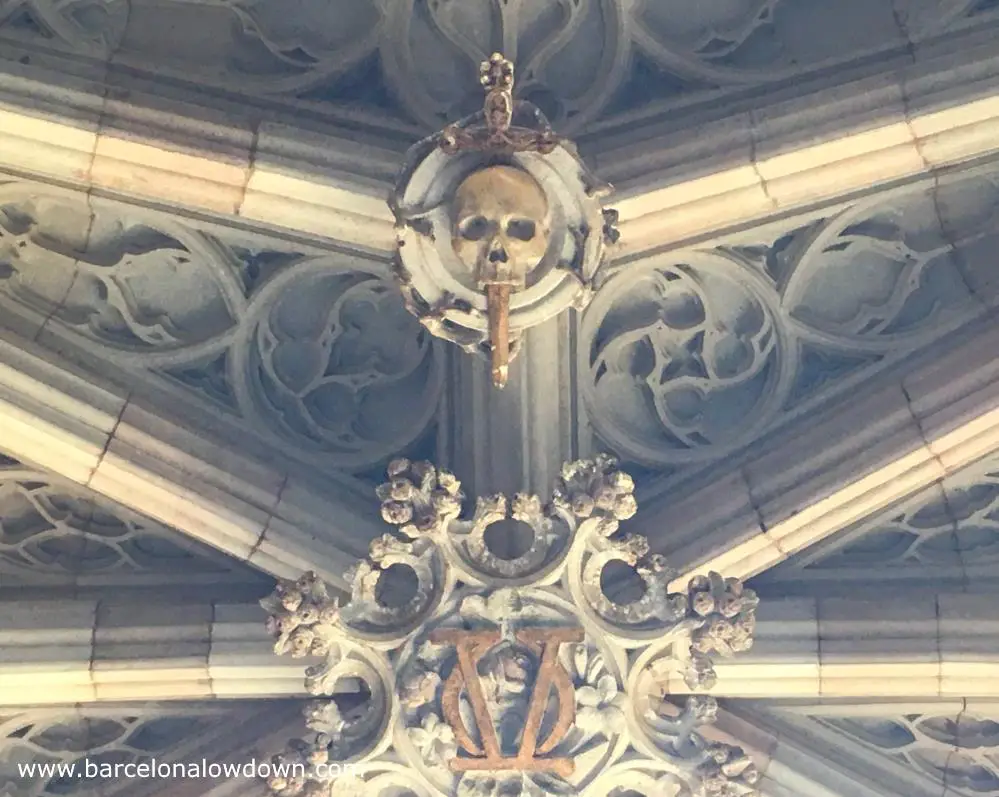
The Gargoyles of Barcelona Cathedral
Gargoyles are found on the roofs of medieval churches and cathedrals. Commonly carved into the form of dragons, gryphons or other mythical creatures, they are hollow stone tubes that channel rainwater from the building’s roof and prevent it from eroding the masonry.
Legend has it that in the Middle Ages, during the annual Corpus Christi celebration, groups of witches used to gather in the streets surrounding Barcelona Cathedral where they shouted and spat at the processions.
This went on for several years until one day, by divine intervention, the witches were turned to stone and placed on the cathedral’s rooftops, where they continue to spit on passers-by every time it rains.
The 13 Tortures of Santa Eulalia
Barcelona’s co-patron saint was born in 290 AD, at a time when the Romans were persecuting Christians.
When she was thirteen years old, Eulalia was brought before Pubilo Daciano, the governor of Barcino, who ordered her to renounce her faith. When she refused, Daciano sentenced her to thirteen different types of torture, one for each year of her young life.
The tortures included being flogged, immersed in an infected well, walking across hot coals, having her breasts cut off, being rolled down the street in a barrel full of broken glass and other sharp objects, crucifixion and finally decapitation.
Eulalia was canonised in 663 AD, and her remains are buried in the cathedral’s crypt.
The festival of Santa Eulalia takes place on the 12th of February. Celebrations last for three days and include processions, fire runs, and human towers.
If you’re visiting Barcelona, be sure to check out La Baixada de Santa Eulalia, which is said to be the lane where the young saint was rolled in a barrel.
The 13 Geese of Barcelona Cathedral
Perhaps the most beautiful part of Barcelona Cathedral is the fourteenth-century cloister which includes several chapels and a patio with a small pond.
The cathedral is dedicated to Santa Eulalia, and the cloisters are home to thirteen white geese.
Legend has it that when Eulalia was captured, she was tending a flock of geese in Sarria, now a neighbourhood of Barcelona.
The Curse of the Liceu
Barcelona’s Liceu Opera House was built in 1847 and is located on Las Ramblas, approximately half way between Plaça de Catalunya and the Columbus Monument.
During the Middle Ages, the area was used for public executions. Then, during the sixteenth century, a Trinitarian convent was built on the site.
During the Peninsular War, the convent was seized by French troops. After the war, the building was briefly recovered by the nuns before being burnt down during political riots in 1835.
Legend has it that when the opera house was built, it was cursed by the nuns buried in the convent’s basement. Apparently, they weren’t happy that a theatre replaced their home.
To date, the theatre has burnt down three times. The first fire occurred in 1861. The second in 1893 when anarchists detonated two bombs, killing twenty people. Then in January 1994, the building was once again gutted by fire.
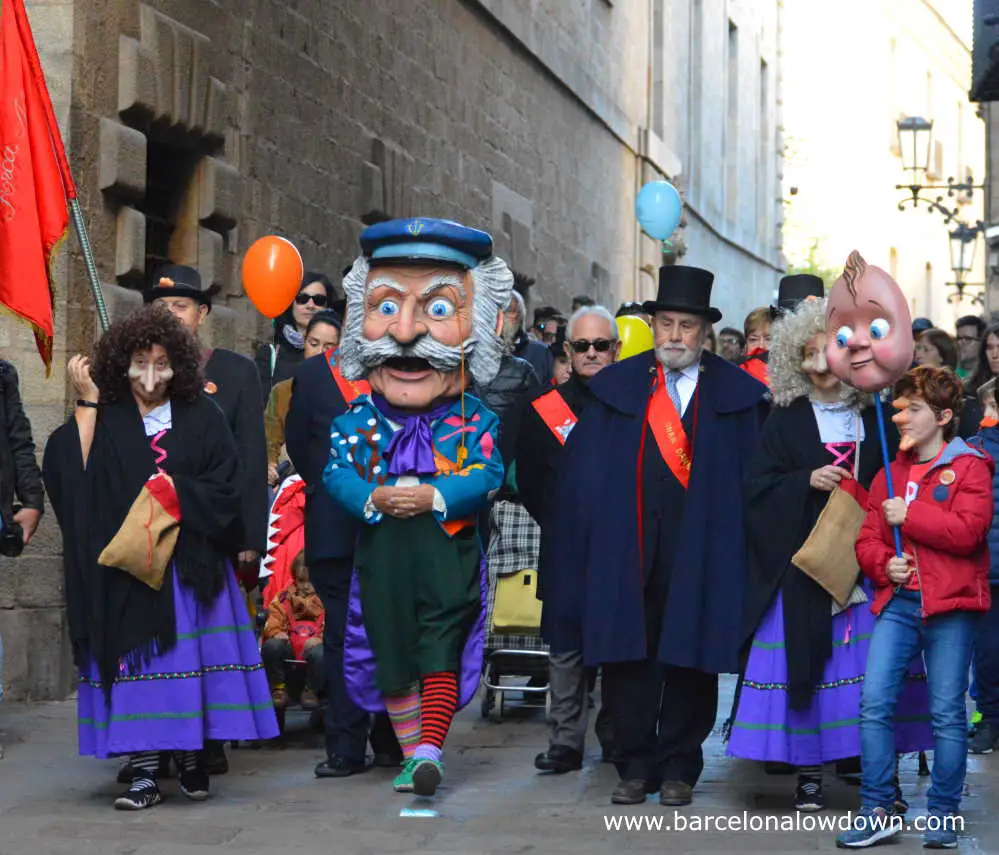
The Nose Man
The Nose Man (L’Home dels Nassos) is a mythical figure from Catalan folklore with as many noses as there are days left in the year. On the first of January, he has 365 noses which he then loses, one per day, as the year advances.
During most of the year, the nose man hides away and only comes out on the 31st of December.
On the morning of New Year’s Eve, parents tell their children to be on the lookout for a man with as many noses as there are days left in the year. The idea being that their excited youngsters will expect to see a man with hundreds of noses.
The game is a play on words based on the fact that there’s only one day left in the year, and any passer-by could potentially be The Nose Man.
In Barcelona, on December 31st, L’Home dels Nassos and his entourage appear in locations throughout the city.
How Mount Tibidabo Got Its Name
To the west of Barcelona, Mount Tibidabo is the tallest peak in the Serra de Collserola range. At the top of the mountain, there’s an amusement park and a small neo-gothic church that is lit up at night and can be seen from most areas of the city.
The mountain was initially called Puig de l’Àliga (Eagles Peak) but was renamed during the sixteenth century by monks who took the name from the New Testament. The Gospel of Matthew describes how Satan took Jesus to the top of a high mountain where he told him he would give him everything if only he would kneel and worship him.
Matthew 4.9.
All this I will give you if you fall down and worship me.
In the original Latin:
Haec omnia tibi dabo si cadens adoraberis me.
The Church of Sant Felip Neri
The church of Sant Felip Neri is a small Baroque church that was built during the 18th century.
Located in a picturesque plaza in the heart of Barcelona’s Gothic Quarter, the small church’s pockmarked façade is a testament to a bombing raid that took place during the Spanish Civil War.
A bronze plaque recounts the story behind the holes in the stone walls:
In memory of the victims of the bombardment of Sant Felip Neri.
Here died 42 people – the majority of them children – due to the actions of Franco’s air force on the 30th of January 1938.
After the war, Franco’s regime attributed the damage to anarchist firing squads who had supposedly executed priests in the square.
Over the years, the story has been turned around so that today the most commonly recounted legend says that the holes were caused by stray bullets when Franco’s troops executed their prisoners here.
In reality, it’s pretty obvious that neither of the two versions of the legend is true. The damage extends well above head height, and it’s doubtful that trained sharpshooters would miss their target by such a large margin.
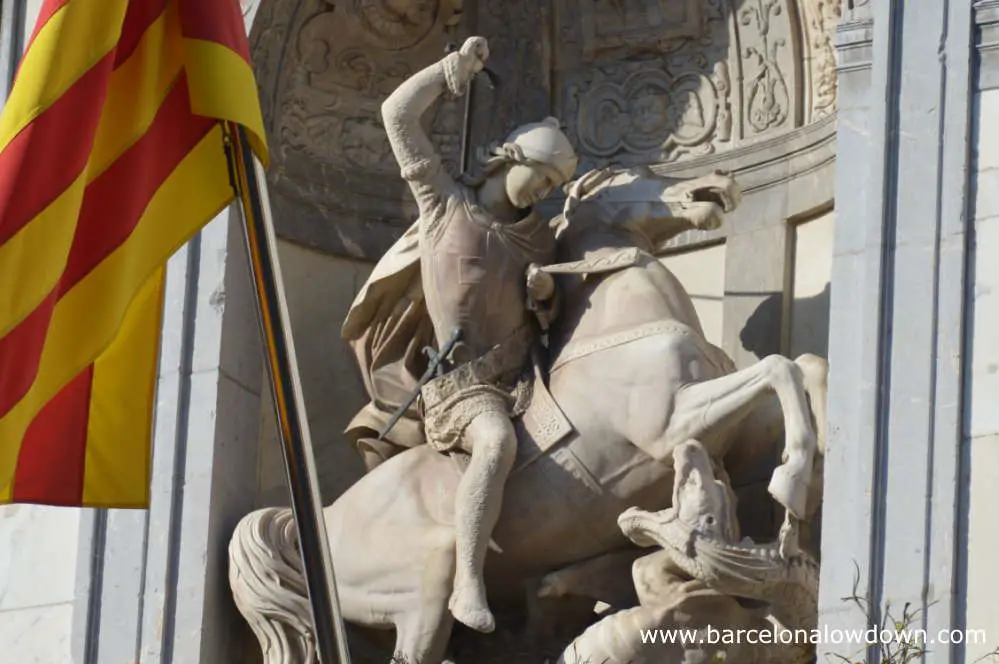
The Legend of St. George and the Dragon
The legend of St. George is a centuries-old folktale that recounts the story of a Roman night who rescued a maiden from a dragon’s lair.
According to the legend, St George was travelling on horseback when he came to a town that a dragon was terrorising. In the Catalan version of the tale, the town was Montblanc, 125 km from Barcelona.
In an attempt to appease the dragon, the townspeople had started to give it two sheep each day. Unfortunately, the dragon wasn’t satisfied, so the sheep were replaced by humans. The King decreed that the person to be sacrificed should be chosen at random.
Finally, the day came when the King’s daughter was chosen for sacrifice, and the princess was led to the dragon’s lair.
When St George asked the princess what was happening, she told him about the dragon and asked him to leave before he was hurt. Instead of going, St George fought and slew the dragon, saving the princess.
Saint George is the patron saint of Catalonia, and there are statues and carvings depicting a knight slaying a dragon throughout Barcelona.
On Saint George’s day (Catalan: El día de Sant Jordi) Barcelona residents gift roses and books to their lovers, friends and family.
The Origins of the Catalan Flag
The Catalan flag is called La Senyera and consists of four red stripes on a yellow background. The flag’s design is attributed to Wilfred the Hairy, the Count of Barcelona from 878 until he died in 897.
According to the legend, the Count was severely injured in battle when Charles the Bald visited him in his tent and asked how he could reward him for his heroic deeds.
Wilfred asked for a symbol to decorate his shield, which stood at the end of his bed. The King wet his fingers with the Count’s blood and traced four vertical lines on the golden shield.
The design was incorporated into the coat of arms of Barcelona and became the Catalan flag.
The Origins of Barcelona
The area surrounding Barcelona has been inhabited since the Neolithic period, and archaeological evidence suggests that there may have been a settlement near what is now the city centre as early as 4,000 BC.
The city as we know it was founded by the Romans, who established Barcino towards the end of the first century BC. During the first and second century AD, a wall was built around the Roman city, which remained largely unchanged until the Middle Ages.
Barcelona Founding Myths
The city has two founding myths, the first of which is linked to Greek mythology, and if it were true would mean that Barcelona predates Rome by approximately four and a half centuries.
According to the legend, Heracles and his brother Hermes accompanied Jason and the Argonauts in search of the Golden Fleece. The group set out in a fleet of nine ships, one of which was lost in a storm in the middle of the Mediterranean.
When they finally found the ship, it was moored near Montjuïc, the hill to the south of Barcelona. Heracles and Hermes were so taken by the area that they decided to build a new city which they called Barca Nona (ninth ship).
The second myth affirms that Barcelona was founded in 230 BC by the Carthaginian general Hamilcar Barca who named the city Barkenon.
I hope you enjoyed this selection of Barcelona’s best-known myths and legends.
If you’ve got a favourite story that isn’t on the list, please tell us about it in the comments below…

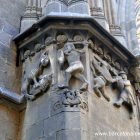



Great article! I’ve always been fascinated by the darker legends of Barcelona, like the story of Enriqueta Martí. It’s incredible how history and myth intertwine, especially in a city with such a rich past. This actually reminds me of a common myth I recently read about regarding official Spanish procedures for foreigners. Speaking of which, I’m currently helping a friend who’s moving to Barcelona navigate the process of getting their NIE number, and we’ve encountered so much conflicting information. It’s almost like its own modern-day legend! I found a really helpful article that debunks the most common myths about the NIE, which clarified a lot for us. But I’m curious, does anyone know if there are any local Barcelona superstitions or old wives’ tales related to dealing with bureaucracy or new beginnings? Perhaps something to ensure good luck when submitting important paperwork?
Hi Brittany,
Thanks for your comment. I didn’t realize that there was lots of conflicting info. out there relating to applying for the NIE, although procedures have changed over the years, so there are probably still plenty out-of-date articles online.
As for supersticions related to paperwork and new beginnings, I can’t think of anything specific, but drinking from the Canaletas Fountain is supposed to bring good luck and ensure that you’ll return to Barcelona, so that might be a good place to start.